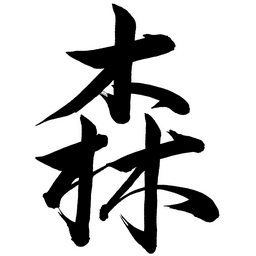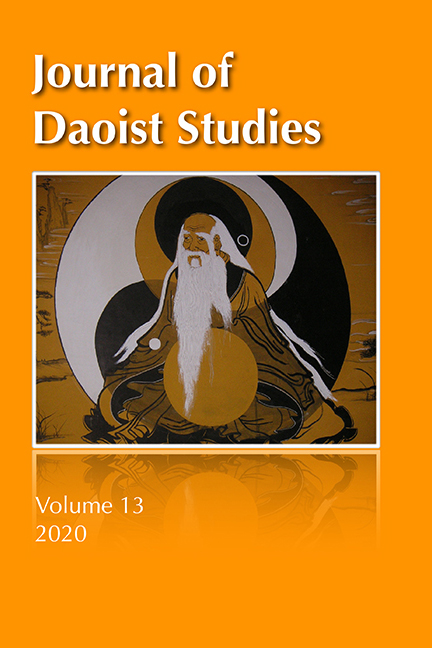| Articles | |
| Andrej Fech | Righteous War in Early Daoist Classics |
| Stephen Eskildsen | The Ancient Awl of 700 Years: Hibernation and Daoist Meditation |
| Guo Wu | Loyalty and Filial Piety in Internal Alchemy |
| Maggie Wan | Named Figures in Frontispieces of Buddhist and Daoist Scriptures |
| Cai Juemin | A False Dao? Popular Daoism in America |
| Forum | |
| Li Juntao | The Neijing tu and the Twenty-four Calendar Divisions |
| LoAn Guylaine Tran | A Ladder to Heaven: A Day at the Five Immortals Temple |
| Adam Chanzit | Return to My Peach Blossom Spring: A Daoist “Paradise” in China Today |
| Abraham S. Y. Poon | The Practice of Body-Qi-Spirit in the Huainan hongliei and in Holo-Cosmic Qigong |
| Timo Dittrich | Snöfrid aus dem Wiesental: Daoist Themes in a German Children’s Book |
| Mark Saltveit | Comedians as Daoist Missionaries |
Andrej Fech – Righteous War in Early Daoist Classics
This paper examines the concept of “righteous warfare” as employed in three early Chinese texts associated with Daoist philosophy: the excavated manuscript Huangdi sijing (The Yellow Emperor’s Four Classics), the Wenzi (Book of Master Wen), and the Huainanzi (Book of the Master of Huainan). At first glance, their promulgation of offensive righteous warfare seems at odds both with the Laozi’s 老子 (Book of the Old Master) condemnations of war and its rejection of “righteousness.” However, a closer analysis suggests that, despite differences in terminology and emphasis, there is a common thread in how political treatises belonging to the different branches of Daoist thought, as well as different stages in its development, treated warfare and its ethical dimensions.
Stephen Eskildsen – The Ancient Awl of 700 Years: Hibernation and Daoist Meditation
The famous Quanzhen master Qiu Chuji (1143-1227), according to the Zhenxian zhizhi yulu, once stated: “A person of old has said, ‘First your thoughts stop. Second, your breathing stops. Third, your pulse stops. Fourth, there is complete cessation.’ You enter into the great meditative trance and do not interact at all with things, [much like] the ancient awl of 700-years.” This statement describes how mental activity, breathing, and pulse can be progressively brought to suspension while in meditation. But who/what is the source quoted here by Master Qiu, and what is “the ancient awl of 700 years”? The source cited by Master Qiu cannot be traced definitively. However, several Buddhist sutras, including the Avatamsaka Sutra, use the term “Trance of Complete Cessation” to refer to a condition where the meditator appears as if dead. “The ancient awl of 700 years,” refers almost certainly to Buddhist monk Huichi—a younger brother of the famous Huiyuan (334-416)— who in 1113 was allegedly found meditating inside a tree (for a duration of roughly 700 years!). Master Qiu thus seems to imply that a body can stay alive for centuries in a hibernating state reached through meditation.
Guo Wu – Loyalty and Filial Piety in Internal Alchemy
The Daoist school of Purity and Brightness was prevalent in the Song and Yuan dynasties (1126-1368), advocating the cultivation of immortality by means of loyalty and filial piety. The common academic understanding is that the school’s doctrines are influenced by Confucianism, but they are in fact closer to Daoism, since in essence they represent a form of internal alchemy. In this paper, I illuminate what exactly is the “internal alchemy of loyalty and filial piety” as described in this school and discuss on its relationship to Confucianism and traditional Daoism. Beyond that, I will focus on their particular understanding of the notion of “heaven and humanity in oneness.”
Maggie Wan – Named Figures in Frontispieces of Buddhist and Daoist Scriptures
Frontispieces preceding the texts of Buddhist and Daoist scriptures are often thought to resemble each other. They commonly share diagonal and symmetrical compositions that constitute the majority of scripture frontispieces in China since their initiation in the 9th century. However, did similar pictorial scenes develop from shared compositions and represent the same kind of religious scenario? Who were the religious figures chosen to star on the frontispieces? What were the major concerns behind this choice? This paper examines different combinations of figures found in Buddhist and Daoist frontispieces from the 15th t0 17th centuries, analyzes their different connotations, and examines the reasons behind the different development of scripture frontispieces in the two religions.
Cai Juemin – A False Dao? Popular Daoism in America
Quite a few popular books that explain Dao, such as certain translations of the Daode jing and The Tao of Pooh, have been heavily criticized by Western scholars as colonialist appropriations of Chinese culture, and thus as a examples of a “false” Dao. However, such critiques are presented without considering the view in China, after all the birthplace of the concept of Dao. This paper aims to add a Chinese perspective to this discussion. First, I analyze the high-frequency words and contents of these popular texts, showing that Dao in these books not only possesses similarities with its Chinese counterpart, but also does not conflict with the serious Dao as defined in Western academics. Next, I suggest that Western scholars declare popular Dao as false, because they judge it based on their own ideas and Western religious conceptions. They ignore the special manifestations of Dao in China, such as its infiltration into daily life, where it does not necessarily manifest as religious practices or rites. Last, combining the manifestation of Dao in the Chinese tradition and its contemporary Chinese understanding with the American Dao, I conclude that the popular Dao is in fact worthy of recognition as Dao and deserves to be studied further. After all, Dao by definition has no rigid form or fixed boundaries and must be inclusive.

